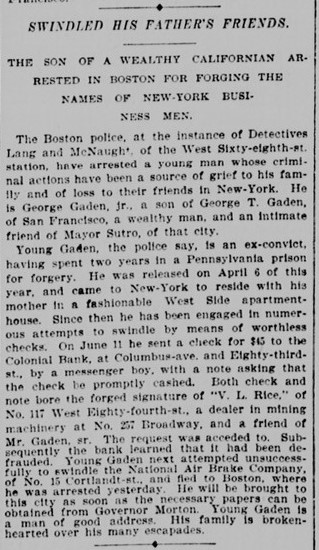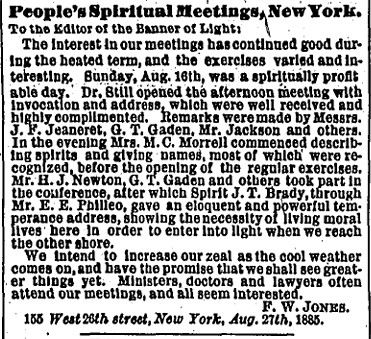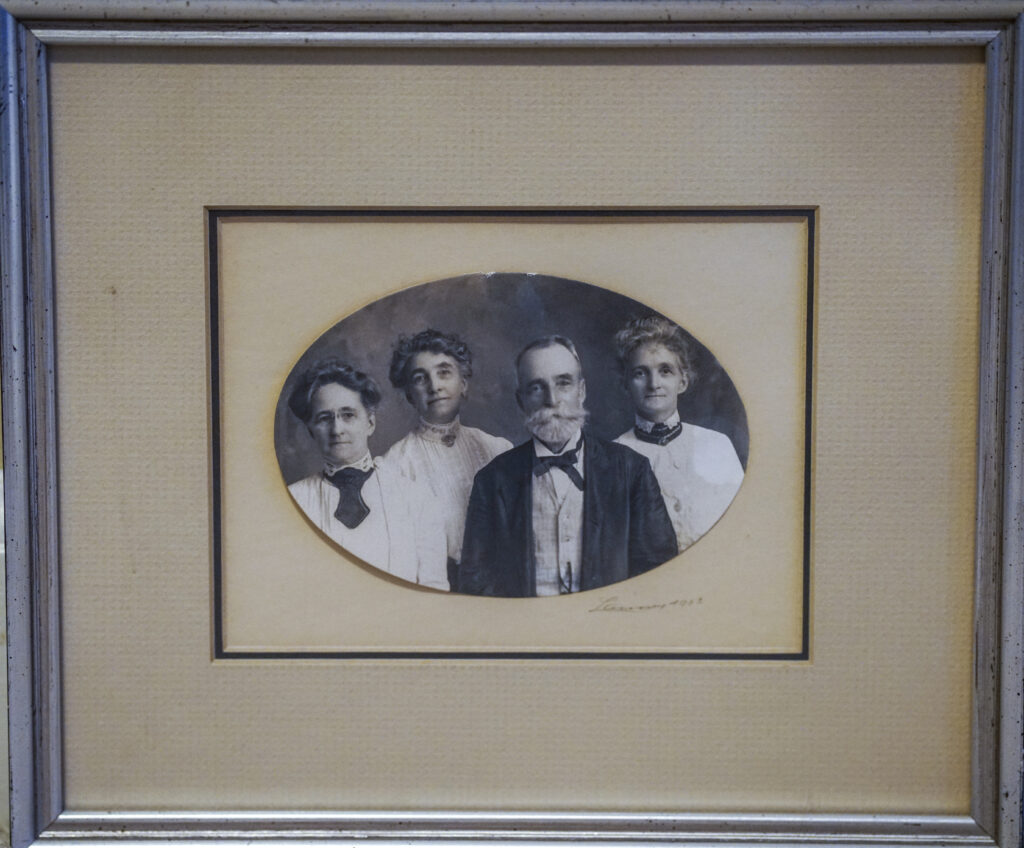If I were a fiction writer, I’d already have a novel on my hands. This story has all the elements: a strong protagonist, mystery, wealth, betrayal, spiritualism, social reform, crime, and ruin. But it’s not fiction—it’s the real-life story of my 2nd great-aunt, Mary Jane Thomas Gaden. And I’m piecing it together, fragment by fragment, from family memoirs, photos, and historical records.
It begins in 1866: a young woman of Southern wealth marries a mysterious man from Newfoundland who shows up in Savannah, Georgia. He is charismatic and experienced, yet enigmatic. She is well-bred and educated. Together, their story unfolds like a map of ambition, deception, reinvention—and resilience.
Over the years, their lives move in sharp, fascinating turns:
- They have a son, named after his father, George Thistle Gaden.
- Her husband becomes a lumber agent, managing her family’s ancestral land.
- They live with her mother, brother, and grandmother in a grand Savannah home on Liberty Street—until her husband and oldest brother arrange to rent it after her grandmother dies.
- He convinces Mary Jane to sell off her inheritance in McIntosh County, Georgia, to fund a lumber business in New York.
- The business fails. There are copious lawsuits. They move to NYC, and the couple becomes involved in Spiritualism, Mary Jane and George inserting themselves as “mediums” and attempting to take over the Parker Spiritual Society.
Her husband reinvents himself repeatedly: environmentalist in the Adirondacks, anti-corruption activist, champion of public morality. Meanwhile, their son goes to college—then begins a life of crime. By 1892, George Sr. is with a much younger woman on the West Coast. Mary Jane divorces him. That same year, her son is arrested for a sensational and highly public burglary case in Asbury Park, NJ (George Jr. robs a wealthy man after reportedly drugging him and escaping with thousands of dollars of jewelry—all to be apprehended in Albany, NY). Mary Jane is mentioned briefly in the fullest account of the incident, appearing as a well-educated, distinguished lady.

She stays near New York—likely to support her son, who continues down a criminal path involving forgery and larceny under aliases, eventually earning a five-year sentence at Sing Sing prison and multiple other prisons in his lifetime. Meanwhile, her ex-husband within months of the divorce marries his new love, a young suffragist, and continues his bold public life across the country—championing “law and order” with Mayor Sutro in San Franscisco, CA while simultaneously conning investors in dubious ventures like an airship scheme in 1896. He dies in 1899, having disowned his son in his will.
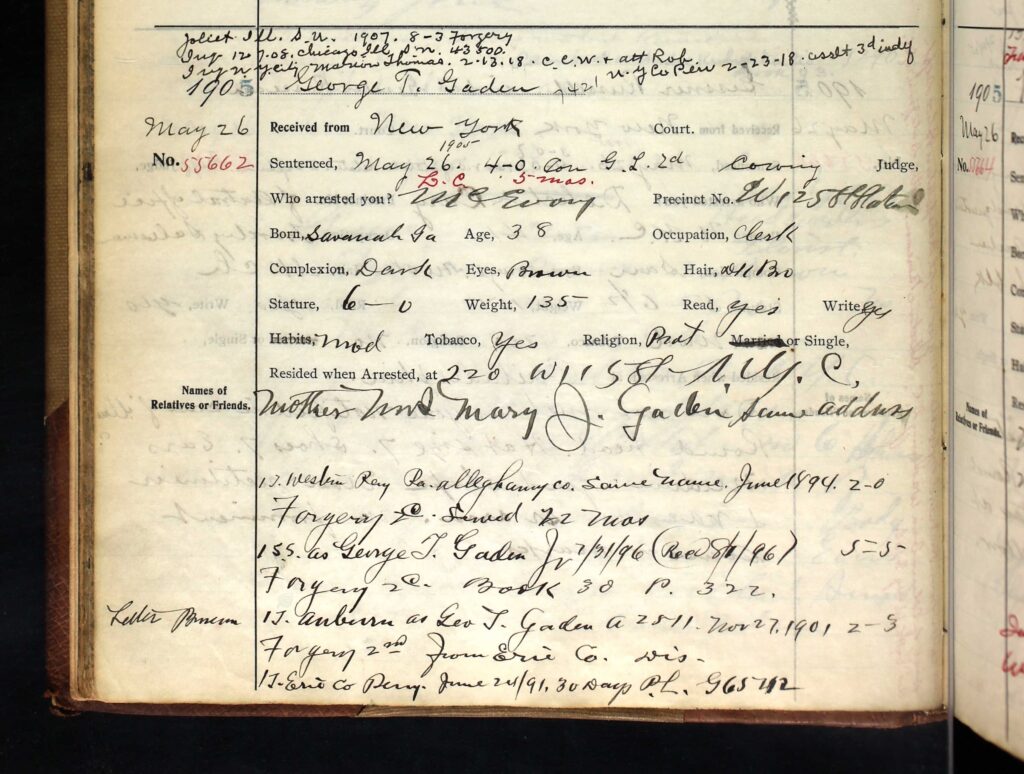
Mary Jane? She escapes the headlines but never from history. She lived long enough to maybe attend her niece’s (my grandmother’s) wedding in 1931—perhaps the last remaining tie to her generation. She passed away in Savannah later that year, the final chapter in a life that, while overshadowed by louder figures, was filled with quiet tenacity.
Origins: McIntosh County, Georgia
Mary Jane was born in 1845 in McIntosh County, GA to Malvina Henrietta Huguenin Thomas and John Joel Abbott Thomas. Her grandfather, Jonathan Thomas, passed away the same year, leaving behind massive land holdings—tracts with names like Peru, Marengo, Stark, Lowe, Baker, and Belvidere in Harris Neck, Georgia. Her other grandfather, John Huguenin, passed away in 1835 leaving behind even more land in Chatham County.
She was likely named for Jonathan’s first wife, Mary Jane Baker. Her early years are recorded in the 1850 McIntosh County census, alongside her parents and siblings. Two more sisters—Malvina and Martha (“Mattie”)—would follow.
Mary Jane spent much of her childhood in McIntosh County, Liberty County, and visiting her maternal grandmother, Eliza Vallard Huguenin, in Savannah. The family also owned a large swath of land near Isle of Hope—known as “The Huguenin Place.” She would one day inherit some of that land.
In the mid-1850s, the family moved to Walthourville in Liberty County, after the older children were first taught by their mother and then by governess Mary A. Boggs of Virginia in McIntosh County. When more advanced schooling was needed, they attended the Walthourville Academy. Their governess married Judge William McLaws in 1853, becoming a “cousin” by marriage (Huguenin side). By 1860, her father has died, and all of the Thomases are accounted for in the 1860 Liberty County Census.
Mary Jane and her sister Eliza became close friends with Alice Gertrude Walthour (the daughter of Mary Ann Amelia Russell Walthour and George Washington Walthour), who would later marry their brother, my 2nd great-grandfather Edward Jonathan Thomas. That connection—friends who became in-laws—remains one of this story’s most elusive relational threads.
Before the Civil War, Alice was sent to Limestone Springs Academy in South Carolina where her oldest sister Eliza Amanda Walthour and brother-in-law Rev. William E. Curtis ran the school. My 2nd great-grandfather took Mary Jane and sister Eliza to live there during the war, accompanied by two women enslaved by the Thomas family. These enslaved women (not named) are mentioned in family memoirs but disappear from records after the war. Their fate remains unknown. Did they return to Liberty or McIntosh County when Edward retrieved his sisters and wife (and first son)?
Education, Marriage, and the Shadow of Reconstruction
In 1860, Mary Jane and her mother are listed as members of the Walthourville Presbyterian Church. That same year, she was sent to Montpelier School for Girls in Georgia. As the war and its aftermath unfolded, Mary Jane became the first of her sisters to marry—tying the knot in Savannah with George Thistle Gaden on July 17, 1866, in a ceremony performed by Rev. I.S.K. Axson.
By 1870, she’s living on Liberty Street in Savannah with her grandmother and her son, George Jr. (Her last name is misspelled “Gayton” in the census.) The couple would later have a second son, Sydny Huguenin Gaden, born in 1874 in Brooklyn, NY, though I have found no records that exist beyond his birth.
George Sr., ever the entrepreneur, shifts from lumber to speculative ventures. Mary Jane sells her inherited land in Georgia in lump sums—likely to support the family’s unstable ventures. The tract sizes (Stark: 350 acres; Peru: 150 acres; and Low: 23.5 acres) and sales reveal not only the scope of her inheritance but also the desperate attempts to capitalize on it.
They move constantly—from Brunswick, GA to Brooklyn, NY. In NYC, they become part of the Spiritualist movement (often associated with the work of mediums and seances), with George writing a letter to The Spiritualist at Work in 1876. He praises the editor, E.V. Wilson, saying, “You were the first person who showed me how to live.”
A Life in the Shadows
The Gaden family story through the 1870s to 1890s is one of chaos, ambition, and reinvention. George Sr.’s ventures continue, shifting from environmental causes to spiritualism to speculative finance. He applies for naturalization in 1883 and becomes a U. S. citizen by 1890. Mary Jane, meanwhile, moves quietly alongside it all—eventually separating from her husband and watching her son spiral into crime.
In the 1905 census, she is living on W. 115th Street in Manhattan. A photographer at the same address may have taken the only known photograph of her later in life. She would return to Savannah by 1910, first living with her brother, then boarding nearby, where she remained until her death in July 1931.
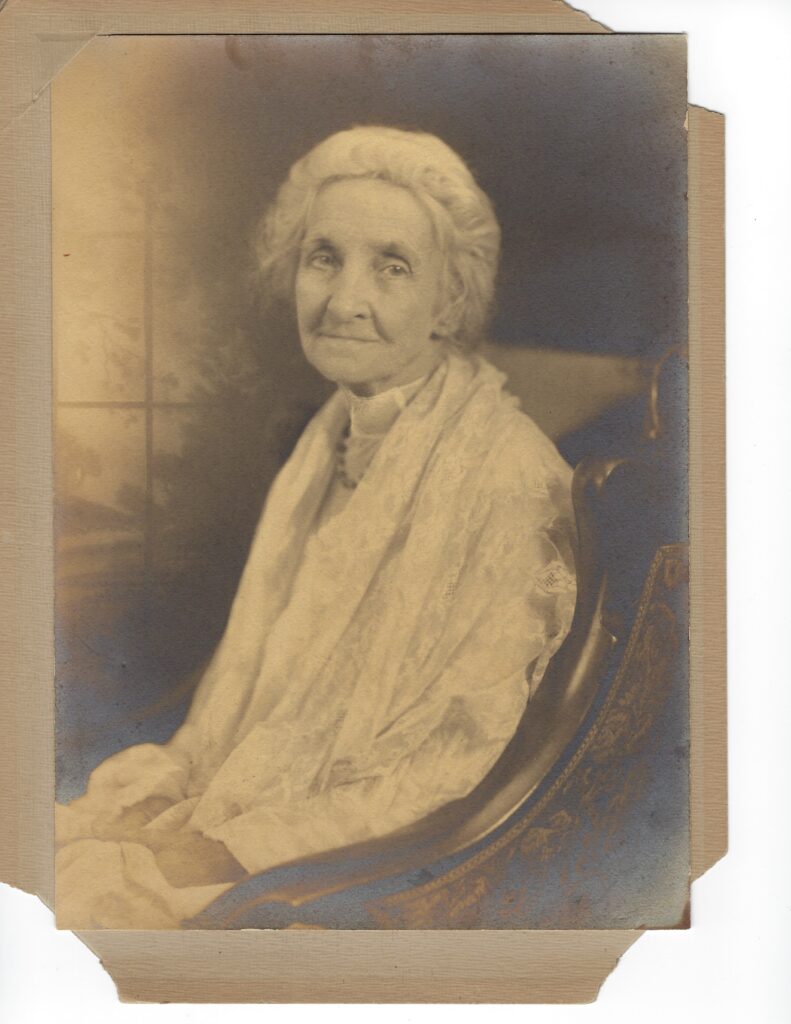
The Final Question
Was Mary Jane complicit in the schemes that surrounded her? Or was she a pawn—caught in the ambition of others? I suspect she was both. Her life, though quieter than those around her, was filled with adventure, mystery, and quiet endurance.
She lived through the Civil War, Reconstruction, Spiritualism, urban crime waves, women’s suffrage, and the early 20th century. And yet, the records speak little of her inner life.
What we do know is this: Mary Jane Thomas Gaden lived in the shadows of powerful and reckless men, but she survived them all. In the end, she was the last of her generation—perhaps the only family member from her grandfather’s era to attend my grandmother’s wedding in 1931.
Her story deserves to step into the light.
Other interesting information I found on the Gadens is below:
